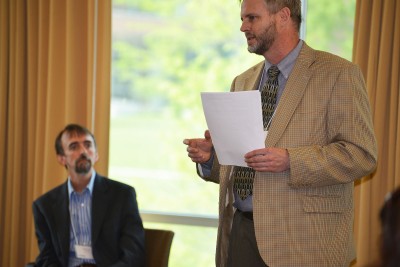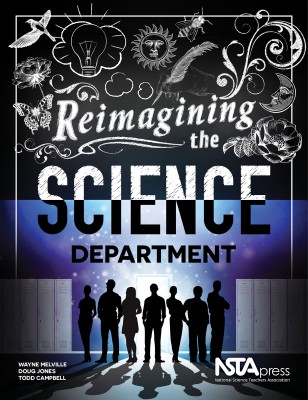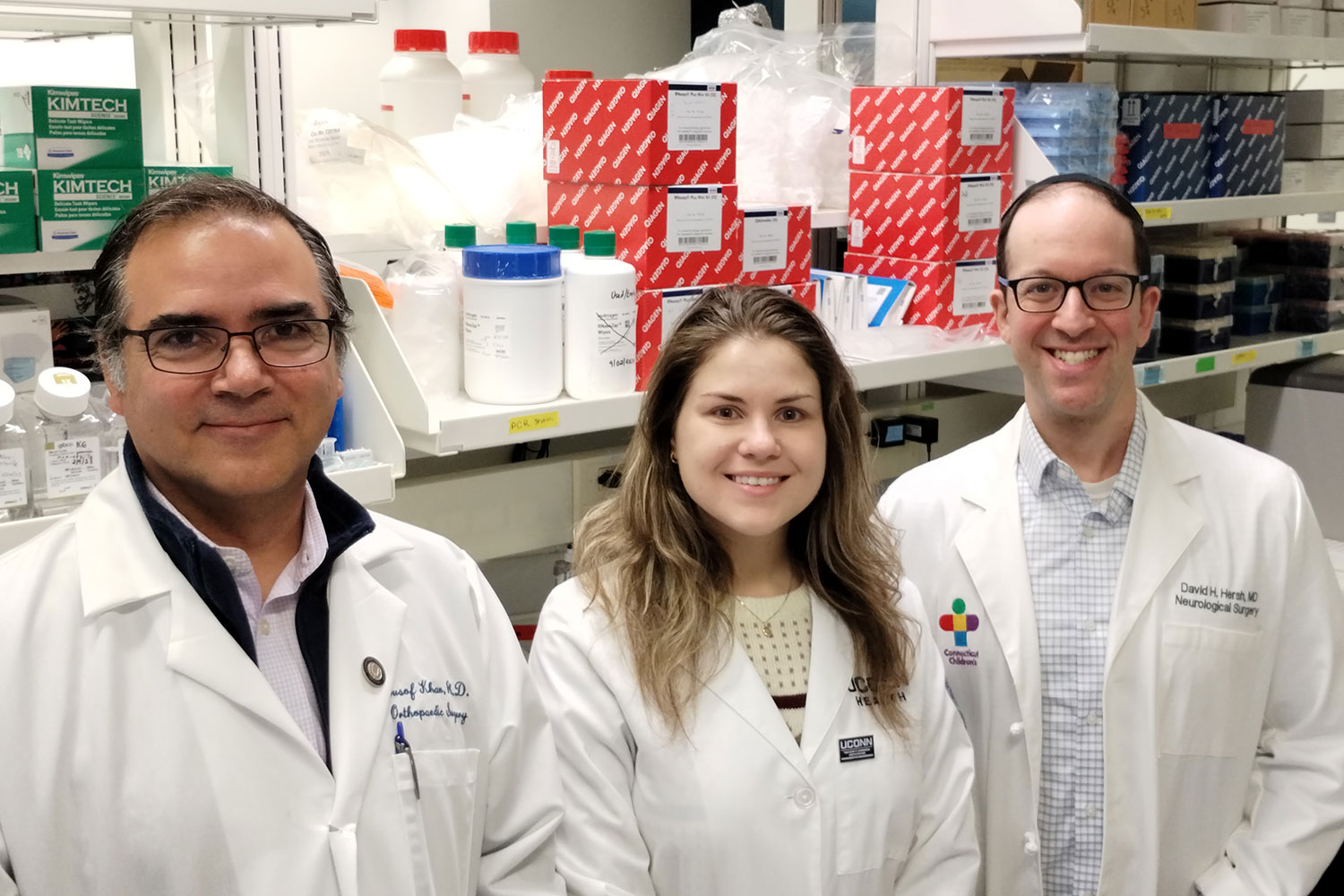A Neag School of Education faculty member is one of the co-authors of Reimagining the Science Department (NSTA Press, 2015), a book published in March by the National Science Teachers Association (NSTA) to help secondary educators create “a place where teachers are encouraged to question both their beliefs about science and the teaching and assessment strategies that develop in response to those beliefs.”
Like the NSTA itself — which promotes teaching through research, among other guiding principles — the book highlights the findings of studies conducted by several leaders in the field of science education, including co-authors Wayne Melville, associate professor of science education at Lakehead University in Ontario, Canada; Doug Jones, a science chair with Lakehead District Schools in Ontario; and Todd Campbell, associate professor of science education at UConn’s Neag School of Education. Within the book, the authors also ask high school administrators, district science coordinators, and teachers to consider the history of science education and science departments before beginning the process of departmental reform.
“Many of today’s practices are rooted in a tradition, yet few know why or how those practices began. What was the purpose of establishing those practices? What’s the purpose of establishing new practices now?” Campbell says. “Among other things, we provide the history of the evolution of teaching high school science, with the idea that it can be used as a foundation for determining where we need to go as we look to the future of science education.”
‘Collective Capital’

Reimagining the Science Department offers many other tools for science education reform, including concrete strategies supporting visions of teaching and learning envisioned by the Next Generation Science Standards (NGSS). Woven throughout the book are anecdotes written by science department chairs working in urban and rural areas. The vignettes illustrate how colleagues have collaboratively confronted “universal issues” related to teaching science in the context of their own schools and communities.
Each chapter ends with a concise, bulleted summary and a series of questions, written for science teachers and specifically for science department chairs, that challenge traditional teaching assumptions, Campbell says.
The book also explores the role and responsibilities of science department chairs. Established roughly 150 years ago, high school science departments and leaders in their current forms have never been clearly defined, say the authors – yet they must be if they are to support professional learning within science departments.
“The role [of department chair] has been seen at times as strictly administrative: making sure school policies are enacted and adhered to,” the authors write. Today, however, the demands for national educational reform outlined in the NGSS require science department chairs to be experts in science content; have the ability to advocate for science education; know how to build a collegial learning environment; and be effective, dynamic, and creative problem solvers, among other capabilities.
High school science chairs need to know not just how to transact the business of teaching science, but also how to transform it, Campbell says.
“Ultimately, the goal of the book is to help make great teachers,” Campbell says. “However, today’s education system is structured in such a way that individual teachers can’t overcome many of the challenges they face on their own. The many ambitious changes needed in science instruction require systemic support, so one of the things we try to show is how departments can use their collective capital to overcome challenges together.”
Collaborating Across Universities
In many ways, Campbell says, the book is the result of a professional relationship that began roughly eight years ago, when Campbell and Melville met at the Association for Science Teachers Association national conference. As their friendship grew, so did opportunities for them to collaborate on various research studies, including those related to improving secondary science professional development and partnering science teachers with scientists as a way to develop more realistic, inquiry-centered, and technology-supported scientific activity.
Together, the two have published seven articles in journals including the Research in Science Education and the Journal of Science Education and Technology. Three additional articles they have co-written are currently under consideration, as is another book proposal they have submitted to NSTA.
“Our work tends to complements each other’s,” Campbell says. “Wayne’s research focuses on needed systemic change, while mine is focused more at the classroom level through developing and supporting model-based instruction. So when he pushes for reform at the departmental level, I think about how this might play out at the classroom level.”
Increasing opportunities for collaborations between Neag scholars and those from other leading universities is one of the Neag School’s strategic goals, as well as one that Campbell and Melville well illustrate. Writing Reimagining the Science Department for NSTA — the largest organization in the world dedicated to science, excellence, and innovation in science teaching and learning — also positions them, the Neag School, and Lakehead University among the global leaders in this field.
“One of our hopes is that our work will lead to a network of secondary science teachers and teacher leaders eager to take their thinking outside of traditional, static places,” Campbell says. “Growing science departments and really making an impact on professional learning could, like the title of our book suggests, take the field of science education to yet-unimagined places.”



